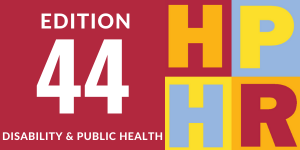In the US, an estimated 25% of individuals have a disability,1 and this number continues to grow.2 Disability can be visible, in the case of some physical disabilities, but also encompasses hidden disabilities such as psychiatric disabilities, developmental disabilities, learning disabilities, and chronic pain & illness. Disabled people* must navigate an often inaccessible and ableist society, one that discriminates against and devalues disabled people. In addition to physical barriers, disabled people experience structural and attitudinal barriers related to educational attainment and resource allocation. This compounds upon similar barriers related to other, intersecting and minority identities that disabled people often hold.3,4 This stigma can turn into ableist actions – bias, discrimination, and at times, violence against disabled people.
Disabled patients often require healthcare at higher rates than the general population, making the healthcare system a key area to address inaccessibility. The U.S. Department of Health and Human Services found that disabled patients have three times as many doctor visits per year and were more than twice as likely to be hospitalized, spending over five times as many days as inpatients, compared to nondisabled patients.5 Yet, despite representing a large proportion of patients seen, healthcare is often inaccessible to, ill-suited to caring for, and fails to acknowledge general and medical trauma endured by disabled patients. We know that patients who hold identities similar to their physicians have stronger physician-patient relationships,6 yet disabled people are heavily underrepresented in the healthcare workforce.
Thus, in this commentary, we provide an overview of three key areas: 1) the current state of healthcare for disabled patients, 2) disability in medical education & the physician workforce, and 3) the relationship between trauma and disability. We conclude with three recommendations for medical education to better prepare medical trainees in providing more equitable, trauma-informed care for disabled patients.


